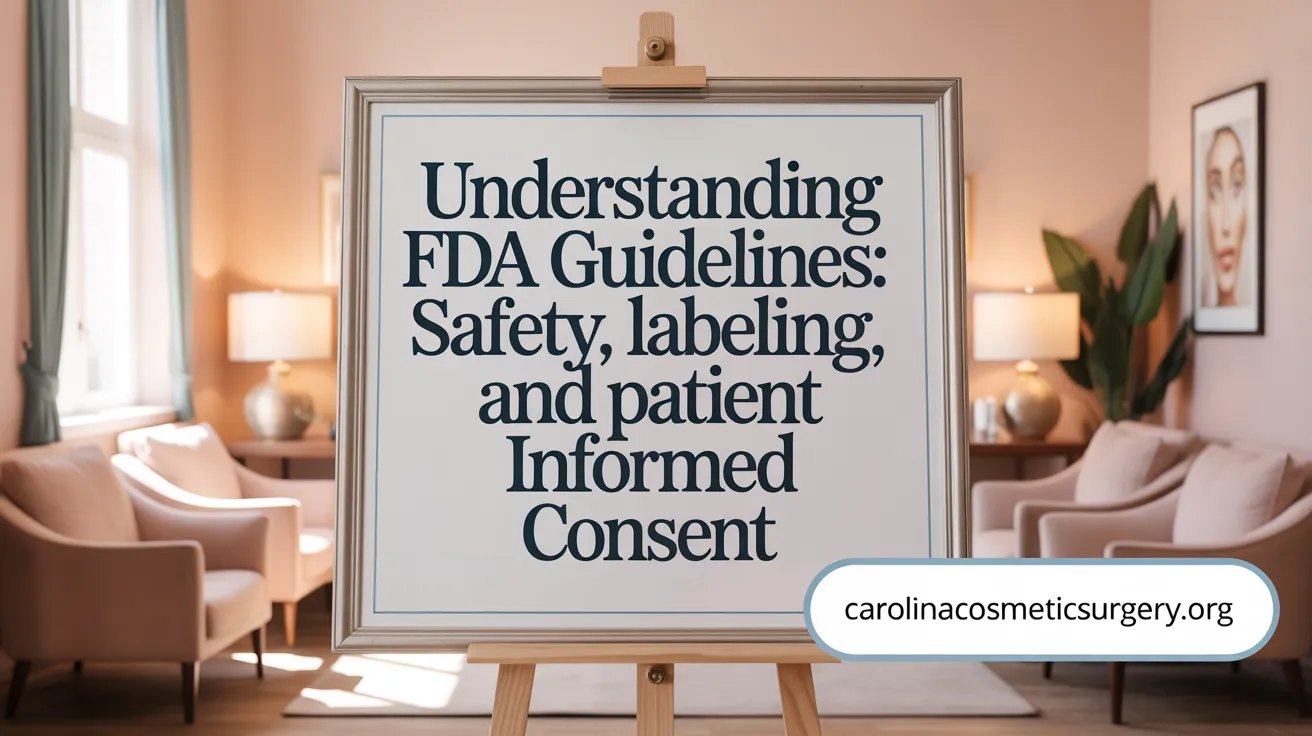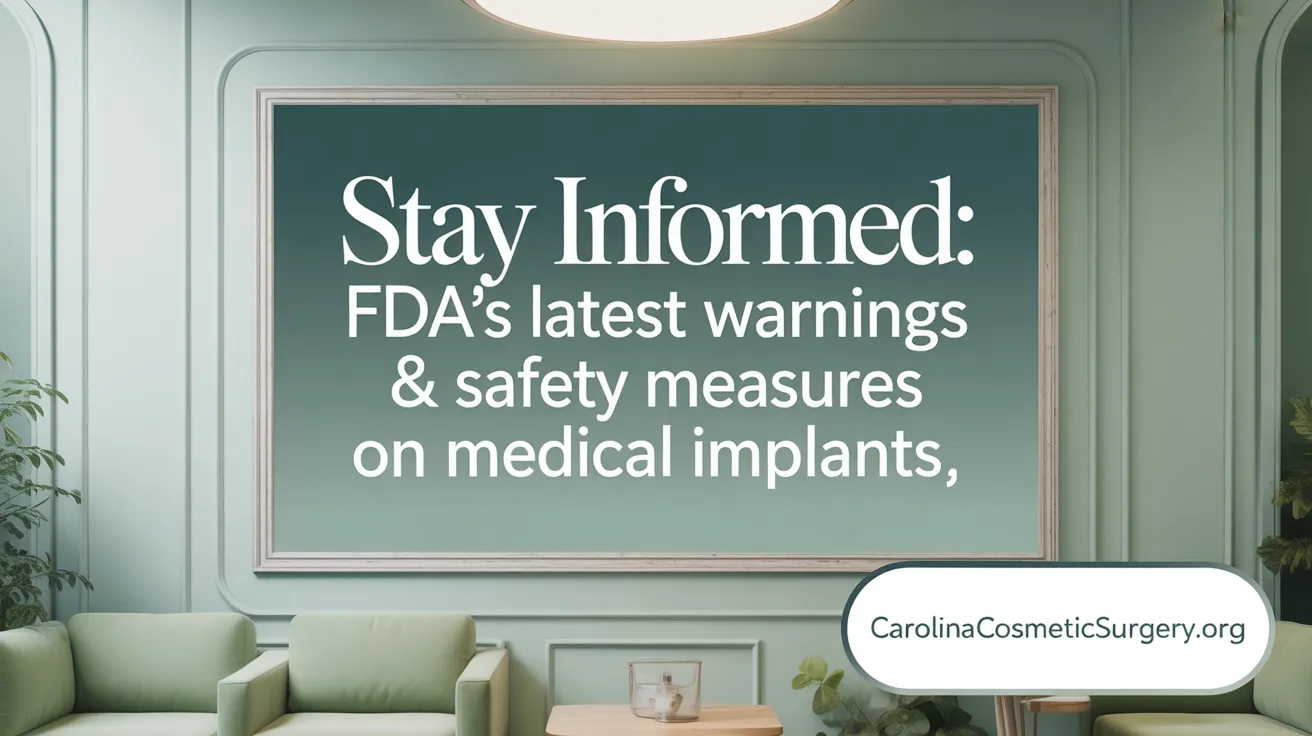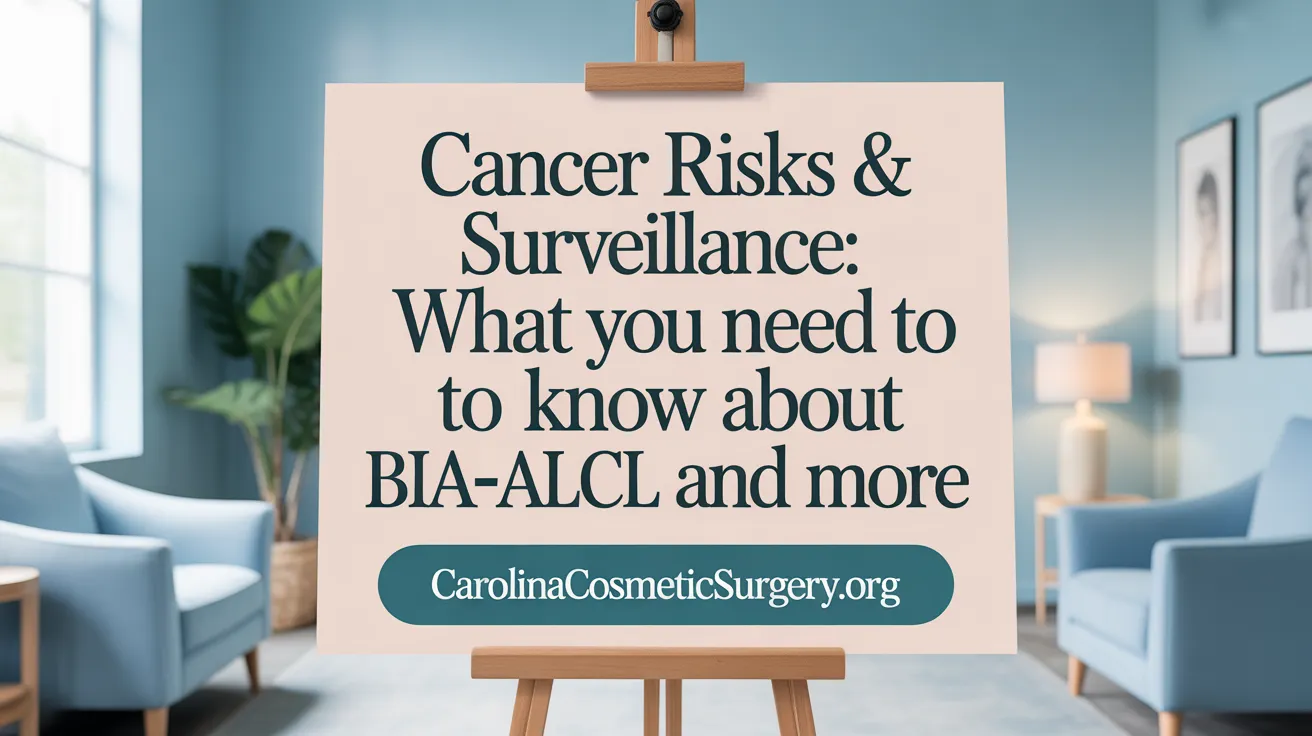Introduction to Breast Implant Safety and Regulatory Oversight
Breast implants have become a common choice for both aesthetic enhancement and reconstructive purposes. However, the safety of these devices involves complex considerations, including risks, regulatory guidelines, and ongoing monitoring. The U.S. Food and Drug Administration (FDA) plays a pivotal role in regulating breast implants, ensuring that patients receive transparent information about potential complications, cancer risks, and appropriate healthcare practices. This article delves into the FDA guidelines, safety concerns, adverse event monitoring, and resources available to patients, empowering informed decision-making regarding breast implant procedures.
<!-- VIDEO:eyJsaW5rIjoiaHR0cHM6Ly93d3cueW91dHViZS5jb20vd2F0Y2g/dj1ZeFpSYzdQMGNKOCIsImltYWdlVXJsIjoiaHR0cHM6Ly9lbmNyeXB0ZWQtdGJuMC5nc3RhdGljLmNvbS9pbWFnZXM/cT10Ym46QU5kOUdjUnNFLTRsdjB1QlJfNWZBVjFjU214YjkyQlVYbm8zem9xbkFjNEdzSUVIclY3cyZzIiwidGl0bGUiOiJCcmVhc3QgaW1wbGFudHMgY291bGQgbGVhZCB0byByYXJlIGZvcm1zIG9mIGNhbmNlciwgRkRBIHNheXMiLCJzbmlwcGV0IjoiRGVuc2UgQnJlYXN0cyBFeHBsYWluZWQgLSBXaGF0IERvY3RvcnMgQXJlbid0IFRlbGxpbmcgWW91LiBEciBMaXogLi4uIFdoYXQgYXJlIHRoZSBGREEncyBMYXRlc3QgR3VpZGVsaW5lcyBvbiB0aGUgU2FmZXR5IG9mIEJyZWFzdCBJbXBsYW50cz8ifQ== -->FDA Regulatory Framework and Breast Implant Approvals

What are the FDA guidelines for breast implants?
The FDA has established comprehensive guidelines to ensure the safety and transparency of breast implants. Initially, all implants undergo extensive testing to demonstrate their safety and effectiveness before approval. Once approved, the FDA mandates that manufacturers include detailed labeling, which features a boxed warning that emphasizes implants are not lifetime devices and that associated risks increase over time.
A crucial component of these guidelines is the requirement for informing patients through a decision checklist. This checklist covers essential information such as risks, benefits, alternative options, and the need for future surgeries. It must be reviewed and signed by both patient and surgeon prior to surgery.
The FDA also recommends routine screening for ruptures, particularly in silicone gel-filled implants. Starting five to six years after implantation, women are advised to undergo MRI or ultrasound screenings every two to three years to detect silent ruptures or silicone leakage.
Patients should be educated about specific risks, including breast implant-associated anaplastic large cell lymphoma (BIA-ALCL), which is more common with textured implants like Allergan BIOCELL. Symptoms such as swelling, lumps, pain, or skin rash require prompt evaluation. In cases of BIA-ALCL, removal of the implant and capsule typically results in a high cure rate. While routine removal of asymptomatic implants is not recommended, ongoing monitoring and reporting of any adverse symptoms are strongly encouraged.
The FDA's stringent guidelines aim to improve communication between patients and healthcare providers, ensuring informed decisions and safe implant practices.
Recent FDA Warnings and Risk Communications on Breast Implants

What is the new warning about breast implants?
In October 2021, the FDA released updated safety guidelines and warnings for breast implants. The most notable change was the introduction of a 'black box warning,' which is the strongest warning the FDA issues for medical devices. This warning emphasizes that breast implants are not lifetime devices; their risk of complications increases the longer they are in place.
The FDA highlighted the potential health risks associated with implants, including the development of breast implant-associated anaplastic large cell lymphoma (BIA-ALCL), a rare lymphoma that is more common in patients with textured implants. The warning also includes the risk of squamous cell carcinoma, another rare type of cancer that can develop in the scar tissue around the implant.
Additional concerns discussed involve long-term issues such as ruptures, capsular contracture, and the emerging systemic symptoms often called breast implant illness (BII). The agency stressed that patients should be aware of these risks and continue regular monitoring.
To improve patient awareness, the FDA mandated updated labeling on implant packaging, including detailed boxed warnings and patient decision checklists. These materials are designed to ensure that women fully understand the potential complications and make informed decisions regarding their breast implant procedures.
Furthermore, strict regulations on the sale and distribution of breast implants were implemented to guarantee that comprehensive risk information reaches patients. Patients are encouraged to report any adverse events through the FDA’s MedWatch program and to have routine screenings, such as MRI scans, to check for silent ruptures over time.
Overall, these warnings and safety measures aim to promote transparency, enhance patient safety, and support ongoing research into the long-term effects of breast implants.
Understanding Cancer Risks Associated with Breast Implants

What are the potential cancer risks linked to breast implants?
Breast implants have been associated with certain rare but serious types of cancers, most notably breast implant-associated anaplastic large cell lymphoma (BIA-ALCL). This is a very uncommon form of lymphoma, an immune system cancer, that usually develops in the scar tissue around textured implants. The estimated occurrence of BIA-ALCL varies widely, ranging from about 1 in 3,817 to 1 in 30,000, with the risk being higher in textured implants such as those made by Allergan's BIOCELL line.
While BIA-ALCL is not classified as breast cancer, it can be life-threatening if not diagnosed early. Symptoms often include swelling or lumps around the breast, pain, or seroma formation, typically appearing many years post-implantation. The FDA emphasizes that early detection and surgical removal of the implant and capsule usually result in a highly curable outcome.
Another concern, albeit much less documented, is the potential for a rare, aggressive tumor called BIA-SCC (squamous cell carcinoma). Only 19 cases have been reported worldwide, and its association with implants is not yet fully understood.
Overall, the risk of developing implant-associated cancers remains very low. However, women with textured implants should be vigilant, report any unusual symptoms promptly, and undergo regular screening. The FDA recommends routine follow-ups, including imaging like MRI or ultrasound, to detect silent ruptures or abnormal tissue changes, which could be early signs of complications.
Informed consent is crucial; physicians and patients should thoroughly discuss these risks before proceeding with breast augmentation or reconstruction. Ongoing research and surveillance, including the use of national registries, help better understand the incidence and outcomes of these rare cancers.
For more information about FDA data on BIA-ALCL and other implant-related cancers, search queries like 'Breast implant associated lymphoma BIA-ALCL FDA data' offer detailed updates and safety reports.
General Safety Assessment: Are Breast Implants Considered Safe?

What is the FDA's position on breast implant safety?
The Food and Drug Administration (FDA) considers breast implants generally safe when used as approved and labeled. They emphasize that implants are not lifetime devices and carry risks that increase over time. The FDA has implemented safety measures, including requiring detailed labeling, warning patients about potential complications, and advocating for routine screening. They have also issued guidelines, such as recommendations for MRI checks for silent ruptures and a patient decision checklist to ensure women are fully informed before proceeding with surgery.
What are the common complications associated with breast implants?
Women with breast implants may experience various complications, such as rupture, capsular contracture (hardening of scar tissue around the implant), and breast pain. Ruptures, especially in silicone gel implants, can be silent, meaning women do not always notice symptoms. Capsular contracture can cause discomfort and shape changes. Other possible issues include infection, changes in nipple sensation, and the need for additional surgeries. While most women do not face serious problems, awareness and monitoring are crucial for early detection and management.
Why is screening for silent ruptures important?
Silicone gel-filled implants are prone to silent ruptures, which are leaks that do not produce obvious symptoms. The FDA recommends routine MRI or ultrasound screening starting around 5-6 years after implantation and every 2-3 years thereafter. These imaging tests help detect ruptures early, often before symptoms appear, preventing further complications. Proper follow-up is vital for maintaining implant safety and addressing issues promptly.
How long do breast implants last?
Breast implants are not designed to be lifetime devices. The risk of complications increases the longer they remain in place. Most manufacturers and surgeons suggest replacement or removal every 10-20 years, depending on individual circumstances. Regular monitoring and imaging help identify silent issues like ruptures or capsular contracture, guiding timely intervention.
How should patients approach risks and benefits?
Thorough counseling with healthcare providers is essential before breast implant surgery. Patients should review detailed information about potential risks, including rare but serious conditions like BIA-ALCL (a lymphoma linked to textured implants) and systemic symptoms sometimes called breast implant illness (BII). Utilizing tools like the FDA's patient decision checklist enables women to make informed choices aligned with their health goals. Ultimately, while many women experience no serious problems, understanding and managing the risks are key to safe and satisfying outcomes.
Health Risks and Complications From Breast Implant Rupture

What health risks and complications can arise from breast implant rupture?
Rupture of breast implants can cause a range of local tissue reactions and potential health issues. Silicone gel leaks from ruptured silicone implants may lead to the formation of silicone granulomas, which are lumps of scar-like tissue, or cause chronic inflammation in the surrounding tissues.
Patients often experience symptoms such as breast pain, lumps, hardening of the tissue, swelling, or changes in breast shape and sensation. However, silicone implant ruptures are frequently silent—meaning no visible or immediate symptoms—and are often detected only through routine imaging, such as MRI or ultrasound.
In cases where a rupture is confirmed, removal or replacement of the implant is usually recommended. This not only alleviates symptoms but also helps prevent further tissue irritation or inflammatory responses.
Most importantly, while silicone leakage can sometimes migrate outside of the breast tissue, leading to localized complications, it rarely causes systemic illnesses or life-threatening conditions. Conversely, saline implant ruptures generally result in deflation of the implant without systemic health risks.
To manage these risks effectively, regular screening for silent ruptures through imaging protocols is essential. The FDA recommends routine MRI or ultrasound examinations starting 5-6 years after implantation and every 2-3 years afterward, particularly for silicone gel-filled implants. This vigilance allows for early detection and intervention, minimizing the risk of long-term tissue damage and other complications.
Key Safety Considerations for Patients and Healthcare Providers
What safety considerations should patients and healthcare providers be aware of regarding breast implants?
Patients and healthcare providers must recognize several important safety factors associated with breast implants. Although most women experience no serious issues, potential risks include implant rupture, capsular contracture, and the rare development of cancers such as breast implant-associated anaplastic large cell lymphoma (BIA-ALCL) and BIA-squamous cell carcinoma (BIA-SCC).
The FDA recommends routine imaging, like MRI or ultrasound, starting five to six years post-implantation, and regularly every two to three years thereafter, especially for silicone gel-filled implants. These scans help detect silent ruptures that might not produce symptoms. It’s essential to understand that breast implants are not designed to last a lifetime. The longer they are in place, the higher the risk of complications, and reoperations are often needed.
Informed consent is crucial. Patients should be thoroughly educated about the risks, including systemic symptoms that some report, collectively called breast implant illness (BII). Although the exact cause of BII remains unclear, awareness and monitoring are vital.
Healthcare providers should emphasize the importance of choosing experienced, board-certified surgeons and provide comprehensive counseling about implant options, potential complications, and the necessity of ongoing follow-up. Reporting adverse events through the FDA’s MedWatch program and maintaining close communication with patients about any unusual symptoms help ensure safety. Keeping informed through current guidelines aids in early detection of issues and enhances the overall management of breast implant-related health concerns.
Official Labeling, Procedures, and Monitoring Practices for Breast Implants
The FDA has established strict guidelines to ensure patients receive clear information about breast implants and that safety is consistently monitored. One essential requirement is comprehensive labeling that provides detailed information on the benefits, risks, and materials used in the implants. This includes implementing boxed warnings—also known as black box warnings—that highlight that implants are not lifetime devices, and their associated risks increase over time.
A crucial part of documentation is the patient decision checklist. Both the healthcare provider and patient must review and sign this checklist before surgery. It covers risks, alternative options, and candidacy considerations, fostering informed consent. Additionally, patients must receive a device-specific card immediately after surgery. This card includes details such as serial number, implant type, size, and a link to updated safety information.
Routine rupture screening is another key practice. The FDA recommends that women with silicone gel-filled implants undergo MRI or ultrasound starting approximately 5-6 years after implantation. Her health care providers should then conduct these imaging tests every 2-3 years to check for silent ruptures or leaks. These intervals help detect potential issues early, even if no symptoms are present.
To restrict unsafe or uninformed sales, the FDA enforces restrictions on the sale and distribution of breast implants. Manufacturers must comply with the labeling and reporting standards—failure to do so can result in penalties or removal from the market.
Ongoing safety assessments are supported through post-approval studies and national registries like the National Breast Implant Registry (NBIR). These registries collect data on implant procedures and complications, helping to identify trends, risk factors, and long-term safety concerns.
Manufacturer accountability is also emphasized. Companies are required to adhere to FDA regulations, provide detailed labeling, and promptly update safety information as new data become available. They are responsible for ongoing monitoring and reporting of adverse events, contributing to continuous improvements in implant safety.
Resources for Patients to Make Informed Decisions About Breast Implant Procedures
Patients seeking to make well-informed choices about breast implant surgery should turn to a variety of trusted sources for comprehensive information. The FDA’s official website is a primary resource, offering detailed safety data, reports on adverse events, labeling standards, and tools such as patient decision checklists that outline risks and benefits clearly. These materials are designed to help women understand potential complications like implant rupture, BIA-ALCL, and systemic symptoms, as well as the importance of ongoing monitoring.
Reputable organizations such as the American Society of Plastic Surgeons (ASPS) also provide accessible, patient-friendly educational content, including FAQs, safety tips, and advice on choosing qualified surgeons. Consulting with a board-certified plastic surgeon remains crucial, as personalized counseling helps clarify options related to implant type, shape, placement, and long-term maintenance. These professionals can discuss risks specific to individual health profiles and guide careful decision-making.
Furthermore, registries like the National Breast Implant Registry (NBIR) and the PROFILE registry compile ongoing safety data, research findings, and reports of rare complications such as BIA-ALCL. Staying updated through these platforms empowers patients by providing real-world evidence of implant safety and emerging risks.
In summary, combining the FDA’s official resources, professional society information, expert medical advice, and registry data equips women with the knowledge needed to make informed, confident decisions about breast implant procedures.
Clinical Studies and Scientific Data Underpinning Breast Implant Safety
What clinical study results and scientific data exist regarding breast implant safety?
Our understanding of breast implant safety is grounded in extensive clinical research and ongoing scientific evaluation. FDA-approved implants, both silicone gel-filled and saline-filled, undergo rigorous testing before approval and are continuously monitored through post-approval studies.
Long-term follow-up data from FDA-sponsored studies show that most women retain their implants with low rupture rates. For example, at the 10-year mark, approximately 82% of Allergan and 91% of Mentor implant recipients report still having their original implants, indicating a high safety profile over a decade.
A significant concern has been the association between textured implants and breast implant-associated anaplastic large cell lymphoma (BIA-ALCL), a rare lymphoma type. Incidence estimates range from about 1 in 355 to 1 in 30,000, depending on implant texture and brand. Early detection and surgical removal of affected tissue typically lead to successful treatment.
Regarding systemic health issues, current evidence does not support a direct link between breast implants and connective tissue diseases or "breast implant illness" (BII). Although some women report symptoms like fatigue, joint pain, and autoimmune phenomena, scientific reviews and meta-analyses have not established causality.
Ongoing research efforts, including large registries and surveillance programs like NBIR and PROFILE, aim to better understand rare complications and long-term outcomes. This continuous monitoring is vital for updating safety guidelines, informing clinical decisions, and reassuring patients about implant safety.
Summary of Findings:
| Study Focus | Results | Additional Details |
|---|---|---|
| Long-term safety | Most women retain implants with minimal complications | 10-year retention > 80% |
| BIA-ALCL | Incidence varies; early treatment highly effective | Rate ranges from 1/355 to 1/30,000 |
| Systemic symptoms/BII | No proven causal link; symptoms vary | Under ongoing investigation |
| Cancer connection | No confirmed increased risk | Large studies show no link to breast cancer |
| Ongoing research | Critical for safety assessment | Data collection via registries and surveillance programs |
In conclusion, the scientific data supports that when used appropriately and monitored regularly, breast implants remain a generally safe surgical option. Continued research ensures that safety standards evolve in response to emerging evidence, safeguarding patient health.
Conclusion: Navigating Breast Implant Safety with Informed Awareness
Breast implants offer many women desired aesthetic and reconstructive benefits, yet their use entails important safety considerations. The FDA’s comprehensive guidelines—including risk labeling, monitoring protocols, and patient decision tools—help ensure transparency and patient protection. Although implants are generally safe, patients must understand the risks of complications like rupture, capsular contracture, and rare but serious cancers such as BIA-ALCL. Vigilant screening and timely medical follow-up are key to managing these risks. Ultimately, well-informed decisions made in partnership with experienced healthcare providers, combined with access to reliable resources and registries, equip patients to safely navigate the complexities of breast implant use and long-term health.
References
- Breast Implants - FDA
- What to Know About Breast Implants - FDA
- Breast Implant Safety | American Society of Plastic Surgeons
- Breast Implant Safety: an Overview of Current Regulations and ...
- What New FDA Guidelines for Breast Implants Mean for You
- Stronger guidance about breast implant safety
- Female Plastic Surgeon Explains New FDA Breast Implant Guidelines
- FDA Releases New Updates on the Safety and Effectiveness of ...
- What You Need to Know About the New FDA Breast Implant ...
